Composting of organic (waste) materials has been around for centuries in various forms in agriculture and has been given the term Black gold for good reason. Compost can increase the water retention of soil, improve drought tolerance, provide humus, prevent the growth of weeds, boost crop yields and reduce the need for fertiliser and chemicals. During composting, the material is aerated by regularly turning the windrow with a grinder. The microorganisms in the composting process break down the organic matter, this will heat up the windrow and a considerable part of the organic matter will get lost during this process. (generally considered to be up to half). Using EM there is now an alternative which has all the benefits of traditional composting without the negatives in the form of leaching and losses.
Bokashi Composting
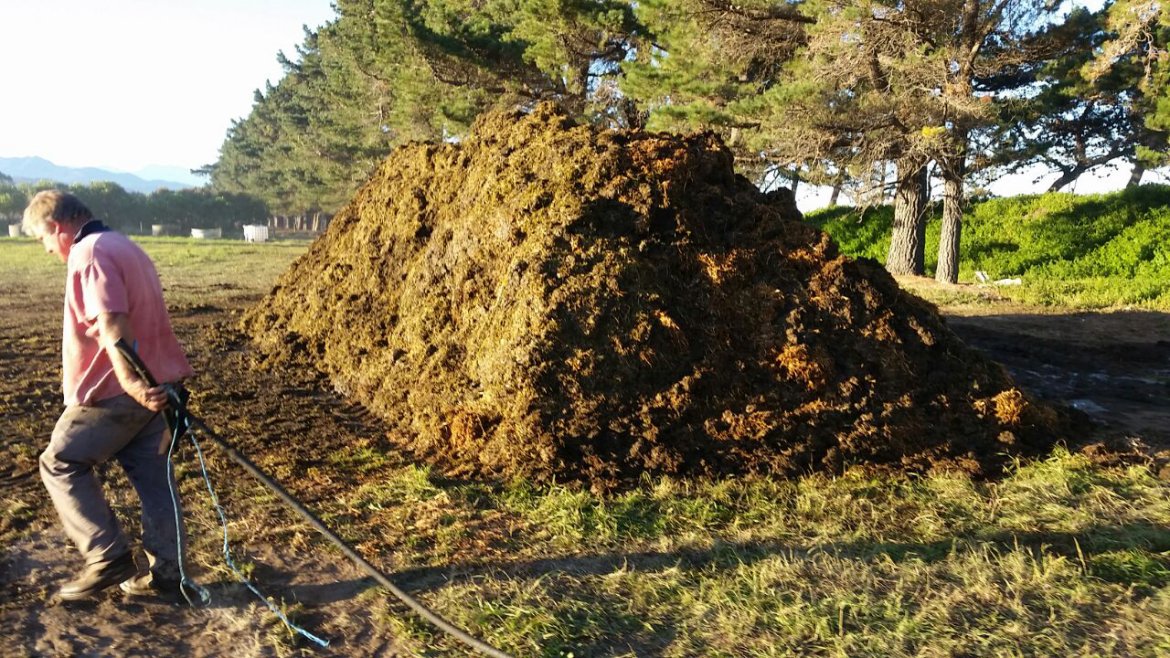 This technique called anaerobic composting or bokashi which ferments the organic materials rather than decomposes, has demonstrated there is a way to keep all of the energy and retain all the original organic material. This process takes place without aeration and without any extra processing therefore saving time and money. A starter in the form of EM is added to organic matter at roughly the same ratios of C : N as compost and the material is then fermented by covering the windrow/pile in a plastic cover similar to a silage cover. This compost will have higher energy and nutrient levels than a conventional aerobic compost because the heat generated is much lower (closer to 40 degrees C), and no leaching occurs because of the cover. This process is similar to making silage where we get a process more towards fermentation than decomposition. A good example as to why this process is important is that as the silage process makes herbage more digestible to cows, this EM based composting process makes the material more digestible to the soil! The EM Bokashi composting method is a relatively fast process that provides not only valuable organic matter to the soil, but also provides the benefits of fermentation by-products (metabolites) to help grow healthy crops and maintain healthy soils with a low cost sustainable system.
This technique called anaerobic composting or bokashi which ferments the organic materials rather than decomposes, has demonstrated there is a way to keep all of the energy and retain all the original organic material. This process takes place without aeration and without any extra processing therefore saving time and money. A starter in the form of EM is added to organic matter at roughly the same ratios of C : N as compost and the material is then fermented by covering the windrow/pile in a plastic cover similar to a silage cover. This compost will have higher energy and nutrient levels than a conventional aerobic compost because the heat generated is much lower (closer to 40 degrees C), and no leaching occurs because of the cover. This process is similar to making silage where we get a process more towards fermentation than decomposition. A good example as to why this process is important is that as the silage process makes herbage more digestible to cows, this EM based composting process makes the material more digestible to the soil! The EM Bokashi composting method is a relatively fast process that provides not only valuable organic matter to the soil, but also provides the benefits of fermentation by-products (metabolites) to help grow healthy crops and maintain healthy soils with a low cost sustainable system.
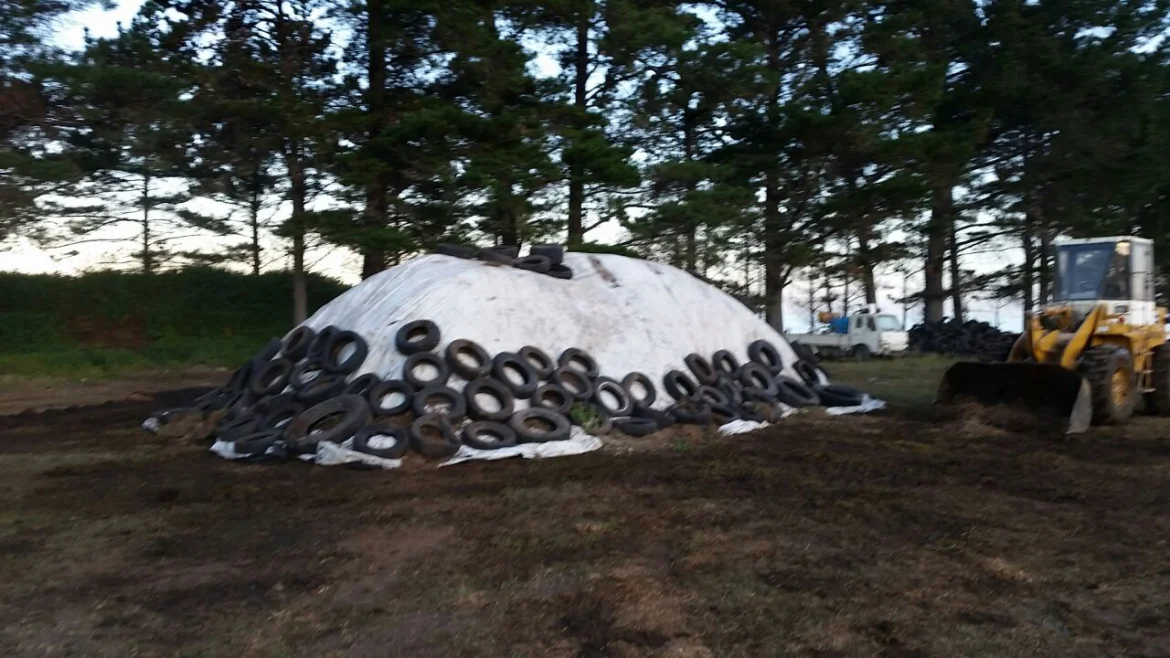 For farmers or vineyard/orchard managers who have access to a cheap source of carbon (straw, bush cuttings, grape marc, food waste products, pretty much any organic matter) and have left over effluent or any other natural source of nitrogen, this can we a very cost effective and easy way enhance their soils. We have been working with Rik Mulder from Soil Matters, who has brought the knowledge and skills of Bokashi making from the Netherlands and mixed with plenty of enthusiasm he has been working with a group of farmers to get some Bokashi projects off the ground.
For farmers or vineyard/orchard managers who have access to a cheap source of carbon (straw, bush cuttings, grape marc, food waste products, pretty much any organic matter) and have left over effluent or any other natural source of nitrogen, this can we a very cost effective and easy way enhance their soils. We have been working with Rik Mulder from Soil Matters, who has brought the knowledge and skills of Bokashi making from the Netherlands and mixed with plenty of enthusiasm he has been working with a group of farmers to get some Bokashi projects off the ground.
Below is a video that shows large scale Bokashi operation and the images showcase recent Bokashi piles some farmers in Canterbury have put down.
Composting Process
EM will speed up the composting process significantly with research showing they overall timeframe can be decrease by up to 30%, this is important as it allows you to get the compost into the soil quicker and also generate more compost over the course of a season.
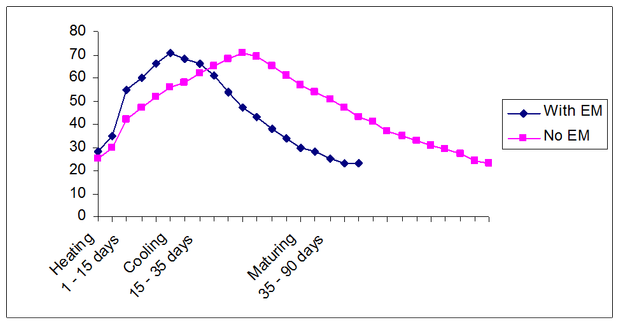
Example Recipe for Bokashi Compost at Seresin by Bart Arnst
- Activite EM at least 1 week prior to making the compost
- For each cubic metre of grape marc, you add 1 cubic metre of sawdust/paper waste. To this (optiona) you add 2kg of rock phosphate and 200 g. of elemental sulphur.
- Mix ingredients thoroughly and as you do so gradually add the EM-A. Aim to add 3 to 5 litres per cubic metres of final mix.
- Make a compacted heap, and cover making airtight as possible with black plastic.
- Leave for 6 weeks.
Compost comparison at Seresin
A comparison of EM compost showed the EM grape-compost produced significantly higher fresh weights for both mustard and radish than the standard grape compost in the seed raising experiments.See the below table for the details.
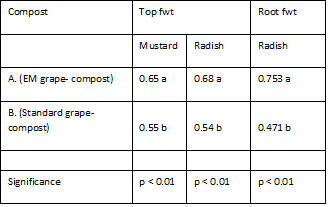
An excerpt from the full trial report states that - Previous experiments have demonstrated the efficacy of EM Bokashi, particularly in pot trials, but not with a direct comparison with aerobic compost from the same materials. This experiment demonstrates the efficacy of the EM inoculated compost over the ‘non EM’ product. It is also interesting to note that there is much less loss of carbon during the EM process than the aerobic process. So, as products were applied at the same rate, the EM treated product not only increased plant growth more than the ‘non EM’ product but also allowed the initial residue to be spread over a larger area.
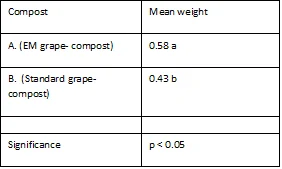
For more information on composting the EM way visit our composting page or contact us directly to learn more about large scale Bokashi compost.
Source link













